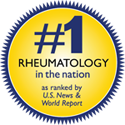- Hydroxychloroquine (Plaquenil)
- Chloroquine (Aralen)
- Quinacrine (Atabrine)
What are anti-malarial drugs, and why are they used to treat lupus?
Hydroxychloroquine (Plaquenil), chloroquine (Aralen), and quinacrine (Atabrine) are medications that were originally used to prevent or treat malaria. However, during World War II it was also found that these medications were effective in treating the symptoms of lupus. Specifically, anti-malarial medications have shown to improve muscle and joint pain, skin rashes, pericarditis (inflammation of the lining of the heart), pleuritis (inflammation of the lining of the lung), and other lupus symptoms such as fatigue and fever. These medications may also prevent lupus from spreading to certain organs, such as the kidney and central nervous system (your brain and spinal cord) and may help to reduce flares by as much as 50%. Plaquenil and other anti-malarials are the key to controlling lupus long term, and some lupus patients may be on Plaquenil for the rest of their lives. For this reason, you can think of anti-malarials as a sort of “lupus life insurance.”
Studies have shown lupus patients on anti-malarials actually live longer than those who are not, and these medications are usually prescribed when someone is first diagnosed with the disease. Anti-malarials are particularly useful in treating discoid lupus, subacute cutaneous lupus, and mouth sores associated with lupus; they are also effective in treating rheumatoid arthritis and Sjogren’s syndrome. However, anti-malarials are not a sufficient treatment for more severe lupus symptoms such as kidney disease and nervous system or blood vessel involvement. When lupus spreads to these organs, immunosuppressive medications are usually added to help minimize irreversible injury.
What anti-malarial drugs are commonly prescribed for lupus?
Three anti-malarial drugs are prescribed for lupus symptoms. Hydroxychloroquine (Plaquenil) is the most commonly prescribed because it is generally believed to cause fewer side effects; chloroquine (Aralen) has a reputation for more serious side effects, but it may be prescribed in situations where hydroxychloroquine cannot be used. Quinacrine (Atabrine) is another alternative, but it is prescribed less often because it can sometimes cause a yellow discoloration of the skin. It is sometimes given in addition to hydroxychloroquine if the patient does not respond to Plaquenil alone. Quinacrine tablets are no longer manufactured and can only be obtained through a compounding pharmacist. Your doctor will advise you on how to obtain quinacrine if this becomes your advised method of treatment.
How do anti-malarial drugs control lupus symptoms?
Anti-malarial medications help to control lupus in several ways by modulating the immune system without predisposing you to infection. Anti-malarials can protect against UV light and sometimes even improve skin lesions that do not respond to treatment with topical therapy (ointments). Anti-malarial medications may prevent activation of plasmacytoid dendritic cells, a component of the immune system that is responsible for making interferon.
Can anti-malarial drugs be taken with other lupus medications?
Yes, anti-malarials can be taken with other lupus medications, including corticosteroids (e.g., prednisone), immunosuppressives, cytotoxic drugs, and NSAIDs. Anti-malarial drugs may be given in combination with prednisone to reduce the amount of steroid needed to control lupus symptoms and thus to alleviate some of the side effects of the steroid. In addition, since it usually takes about 1-3 months for your anti-malarial medications to fully take effect, you may be given a steroid medication to act as a bridging medication and alleviate your symptoms during this interim.
Can anti-malarial drugs be taken during pregnancy?
Anti-malarials are safe to use during pregnancy, but you should speak to your doctor if you are pregnant or may become pregnant to decide the course of treatment that will be best for you. No fetal abnormalities are known to have occurred from taking hydroxychloroquine, and physicians at several major universities have used anti-malarial drugs for years to treat pregnant women with lupus without negative side effects on the fetus.
What should I keep in mind when taking anti-malarial drugs?
Damage to the retina, the light sensitive portion of the inner eye, can occur with long-term use of Plaquenil or chloroquine (Aralen). With Plaquenil, however, the most commonly prescribed anti-malarial, this sort of damage occurs only in 1 out of 5,000 people who take the drug for five years or more. For this reason though, it is important that you see an ophthalmologist for an exam before starting to take an anti-malarial medication for your lupus. Follow-up exams every 6 months (or, annually at the very least) are also advised. You can also monitor yourself between visits with a special grid called an Amsler grid, which can be obtained through your ophthalmologist.
If your ophthalmologist does find some Plaquenil deposits, s/he will simply request that you stop taking the medication, and you may follow up with your rheumatologist about another advised method of treatment. Unfortunately, retinal damage caused by Aralen may be irreversible, but this medication is rarely prescribed anymore for lupus.
Do not smoke while taking anti-malarial medications, since smoking actually reduces the benefits of these drugs. In fact, people with lupus should not smoke at all due to their increased risk of cardiovascular disease.
You should always take your anti-malarial medications with food to prevent stomach upset. If a stomachache does occur, it is usually temporary. However, if you experience stomach upset while taking generic hydroxychloroquine, ask your doctor about trying name-brand Plaquenil instead. While these medications contain the same active ingredient, the preparation of generic hydroxychloroquine can sometimes cause stomach irritation. This sort of upset usually does not occur with commercial Plaquenil. Your doctor can ensure that you receive this version of the medication by writing “do not substitute” on your script.
Lastly, remember that even though you may feel the benefits of anti-malarial therapy after about a month of treatment, it may take up to three months for the full benefits of the drug to manifest. If you experience any serious adverse effects, notify your doctor.
Can I stop taking anti-malarials suddenly?
Long-term anti-malarial use is normally safe. However, if you stop taking your anti-malarial drugs, you may experience a lupus flare.
Potential added benefits of anti-malarial drugs
Anti-malarial drugs may have additional health benefits for some people. Potential benefits include greater protection from UV light and lower cholesterol and blood glucose levels. These benefits may be especially helpful for people taking steroids. In addition, individuals with antiphospholipid antibodies, such as the lupus anticoagulant and anticardiolipin antibodies, may experience a decreased likelihood of blood clots.
What are the possible side effects of anti-malarial drugs?
Most people (about 90%) who take anti-malarial medications experience no side effects. If side effects do occur, they are usually minor and last only for a short period of time.
Potential side effects of anti-malarial drugs include:
- Skin rashes and pigment change. Atabrine, specifically, can cause yellow pigmentation of skin. Sometimes Plaquenil can also deposit in the tissues of the body and cause the skin to take on a greenish tone.
- Dry skin
- Loss of appetite
- Abdominal bloating
- Upset stomach
- Stomach cramps
- Retinal damage – There is a small chance that retinal damage will occur while taking hydroxychloroquine (Plaquenil) or chloroquine (Aralen). For this reason, you should see your ophthalmologist at least once per year so that she/he may check for retinal deposits. Retinal damage caused by hydroxychloroquine is generally reversible, but damage caused by chloroquine may not be. More information on this effect can be found above.
- Less common side effects:
- Headaches
- Muscle aches
- Weakness
- Nervousness, irritability, dizziness (although these effects are uncommon)
- Major neurological side effects: confusion, seizures – These are quite rare, but if you experience them, alert your doctor immediately.
- Exacerbation of psoriasis – If you have psoriasis, Plaquenil may make your condition worse. Talk to your doctor if you have this condition.

